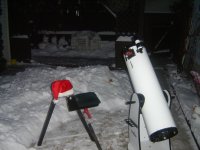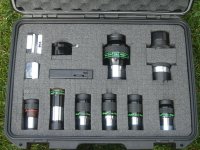BoldenEagle
Well-known member

I currently have Kowa Prominar Tsn-883 spotting scope which I use for moon and planets. Often with 1.6x extender with 25-60x TE-11WZ zoom but sometimes also APM 3.5 mm 1.25" eyepiece. In good seeing these can give very pleasing image quality and details (in my opinion), even the 3.5mm @about 145x magnification with 883. Couple of times I tried the 3.5mm eyepiece with the 1.6x extender resulting to about 230x but image quality was quite bad and no more details were showing.
I'm wondering which would be more reasonable; upgrade to a bigger aperture spotting scope (probaly through exhausting journey to find a low aberration sample...) which I can still use for birds also, or buy a specific astro telescope? I don't want to spend thousands of euros, so refractors are(?) out of question but as I understand, some dobsonian reflectors have good quality/price ratio and they would cost only some hundred euros? I have a place with quite low light pollution and I don't have to carry the scope far away from my house.
Any advice appreciated.
Regards, Juhani
I'm wondering which would be more reasonable; upgrade to a bigger aperture spotting scope (probaly through exhausting journey to find a low aberration sample...) which I can still use for birds also, or buy a specific astro telescope? I don't want to spend thousands of euros, so refractors are(?) out of question but as I understand, some dobsonian reflectors have good quality/price ratio and they would cost only some hundred euros? I have a place with quite low light pollution and I don't have to carry the scope far away from my house.
Any advice appreciated.
Regards, Juhani










